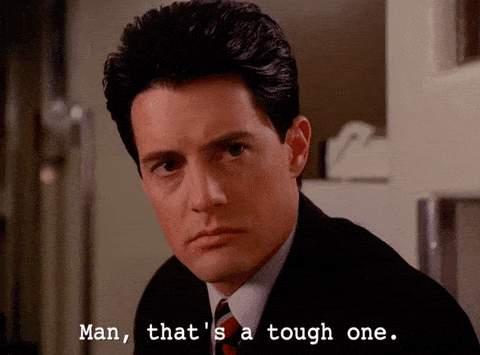There might have been some mistake...
That's what scientists thought when they saw this for the first time
Vostok station is located at a distance of around 800 miles from the geographic south pole.
In March this year, scientists started receiving the first temperature readings of the year from the station.
And they saw that they were 15C hotter than the previous all-time record.
At first, they thought that there might have been some mistake.
They’ve never seen anything like this before.
The situation was the same in the north pole.
The region was more than 3C warmer than its long-term average.
And they knew that the readings were correct.
It’s the same all across the world.
All the regions are heating up.
Whether it’s the Indian subcontinent, countries in Europe and Africa or the US, every region is experiencing heatwaves.
And they are not happening because of natural occurrence.
It’s a human induced climate change.
Among other factors, construction and building material are a huge contributor to this.
If the cement industry were a country, it would be the third largest CO2 emitter in the world with up to 2.8bn tonnes, surpassed only by China and the US.
Buildings cause emission in 2 ways- operational carbon and embodied carbon.
Operational carbon is generated by energy used to operate the building while embodied carbon is the emission generated by the materials and the construction processes.
Embodied carbon, which is emitted even before a building is occupied, represents roughly 11% of global carbon emissions.
And it is mainly caused by 3 materials- concrete, iron, and steel.
Let’s see what alternatives are these 3 startups building⬇️
Steel and concrete…The building industry is a major contributor to climate change. Buildings generate nearly 40% of global greenhouse gas emissions. Most of them are made of steel and concrete- both of which are energy-intensive and highly polluting substances to manufacture. A greener alternative to these materials is wood, which absorbs and sequesters carbon. But with soaring deforestation levels, we can’t afford to simply chop down forests for our building requirements.
We’ve got a solution…Sustainer Homes was founded in 2014 when they were building self-sufficient and portable houses from shipping containers. Their aim was to provide millennials with off-grid, affordable and sustainable homes. But then they realized that shipping containers weren’t enough. They decided to use their expertise in building sustainable, modular, and portable homes to develop modular wooden building systems.
They use natural and renewable materials to create high-quality, long-lasting homes.
The airtight, damp-proof homes are equipped with high-quality climate systems and solar panels.
All the homes are customized as per the customer’s requirement and the entire home can be constructed in just a few weeks.

Everything is accounted for…The homes don’t use any polluting materials like plaster, cement, concrete or steel. All the wood that is used is sourced from strictly managed Finnish forests. To reduce the amount of material, they use Japanese woodworking techniques, robot-driven manufacturing, and evolutionary algorithms in the design process.
C’mon, you can do better…A country with 25 million people, which is less than the population of California, is one of the world’s biggest consumers of household electricity. Australia has some of the highest electricity bills in the world. And despite the advent of renewable energy technology, most of its electricity is still generated through coal. It has one of the highest per capita coal consumptions in the world.
A house clad in solar panels…Australian startup Iron Matrix provides low-cost clean-energy structures that are covered entirely in solar panels. Their innovative construction technology replaces traditional cladding and roofing materials with standard solar panels. Iron Matrix homes are fully reconfigurable and expandable and are made from just nine major parts.
They can be assembled without cranes, scaffolding or heavy equipment- so two people can build a multi-story building by hand.
The panels could generate a home’s entire electricity needs for free.
Additional solar panels can be attached anywhere to the structure.

There’s more to it…It can also be configured into a Solar Carport- a solar-powered garage to charge your electric vehicle (bottom right image). After all, if you’re still using coal to charge your EV, is it really worth it? Iron Matrix claims that the Solar Carport can offset more than 250 tonnes of CO2 over its life!
I could never imagine that…Water is the most used substance on the planet. Do you know what comes after that? - Concrete. It is responsible for 4-8% of the world’s CO2 emissions. This is also leading to an alarming depletion of the world’s sand resources. We produce enough concrete each year globally to cover the whole of England.
Started in 2008…Lithuania-based EcoCocon is constructing houses using environmentally friendly straw bale panels. These panels are made from straw tightly packed into wooden frames. The brand claims that a well-built straw house can last for decades or even centuries.
The dense compression of straw and wooden frames results in high thermal resistance, airtightness and sound insulation.
These cost-efficient panels are certified to withstand 120+ minutes of fire when rendered.
The panels have low embodied and operational emissions(remember the terms from the opening paragraph?).

Quick and easy…The straw houses can be constructed quickly. A 200 square meter one can be constructed by a team of a few people in two days. The entire construction process does not require any steel or concrete and can be assembled by craftsmen with handheld tools. At the end of its life, it does not create any waste. It can be dismantled and the material can be reused.
🙋Trivia of the week
“Adults keep saying: "We owe it to the young people to give them hope."
But I don't want your hope.
I don't want you to be hopeful.
I want you to panic.
I want you to feel the fear I feel every day.
And then I want you to act.
I want you to act as you would in a crisis.
I want you to act as if our house is on fire.
Because it is.”
A famous climate activist wrote this in their book “No one is too small to make a difference”.
Can you guess the activist?
Thanks for reading today’s edition. If you liked it, please share it with your network.
Hit that 💚 if you liked today’s edition.
Thanks and see you next week😄










The activist is a 19-year old girl with asperger syndrome, OCD, and selective mutism. She's Greta Thunberg